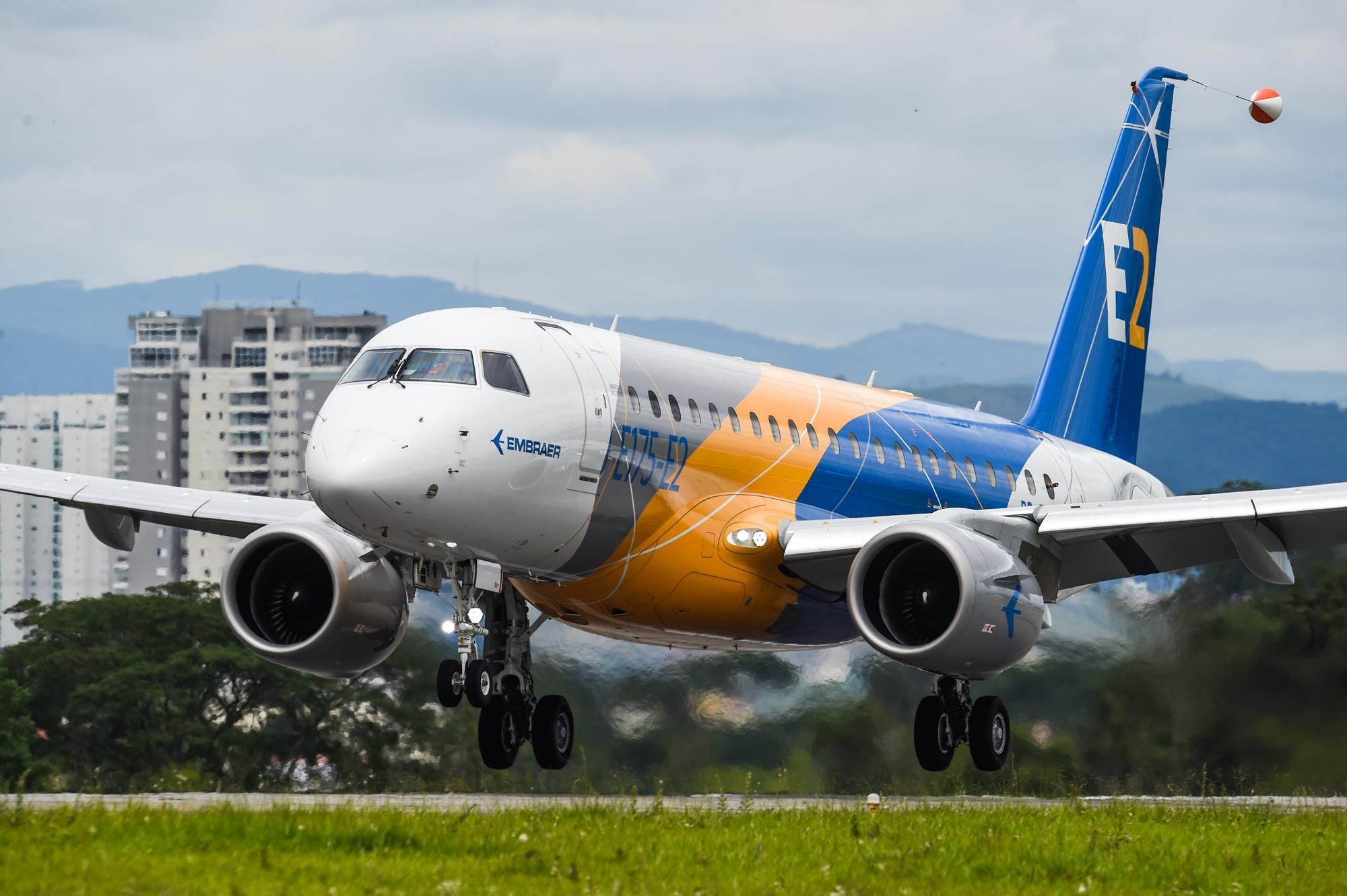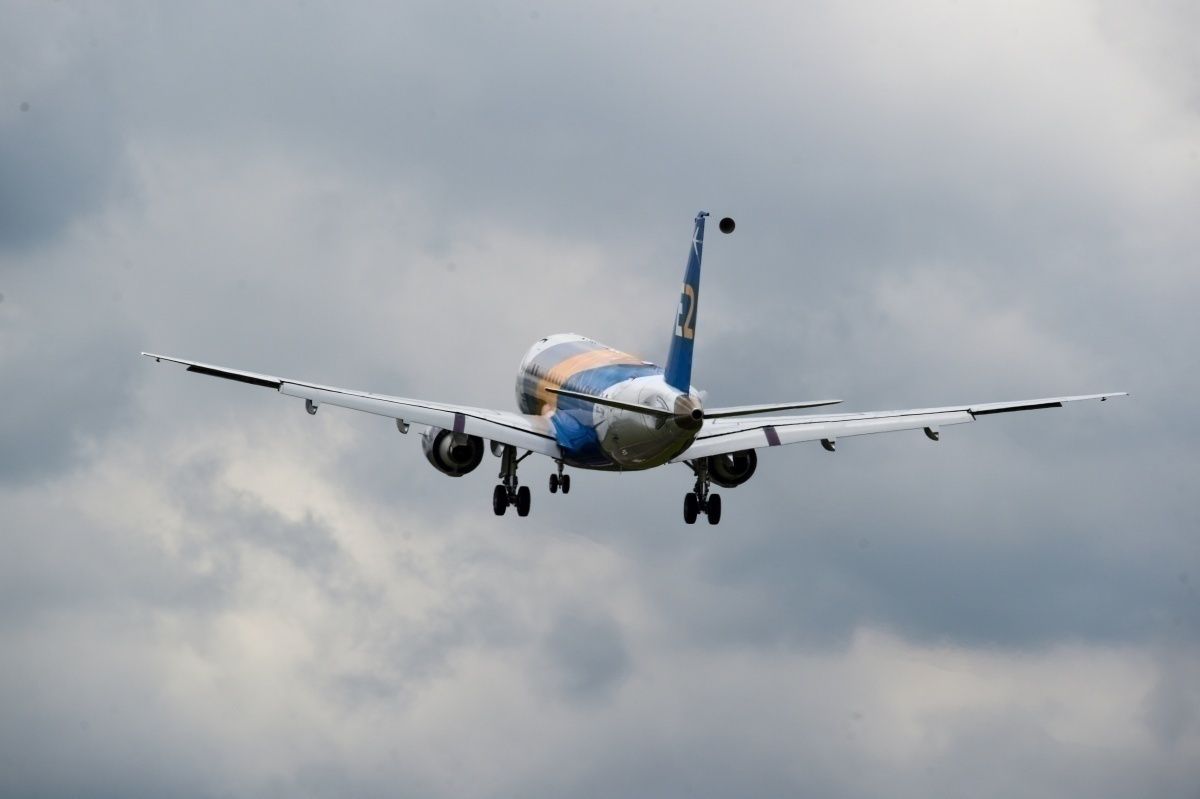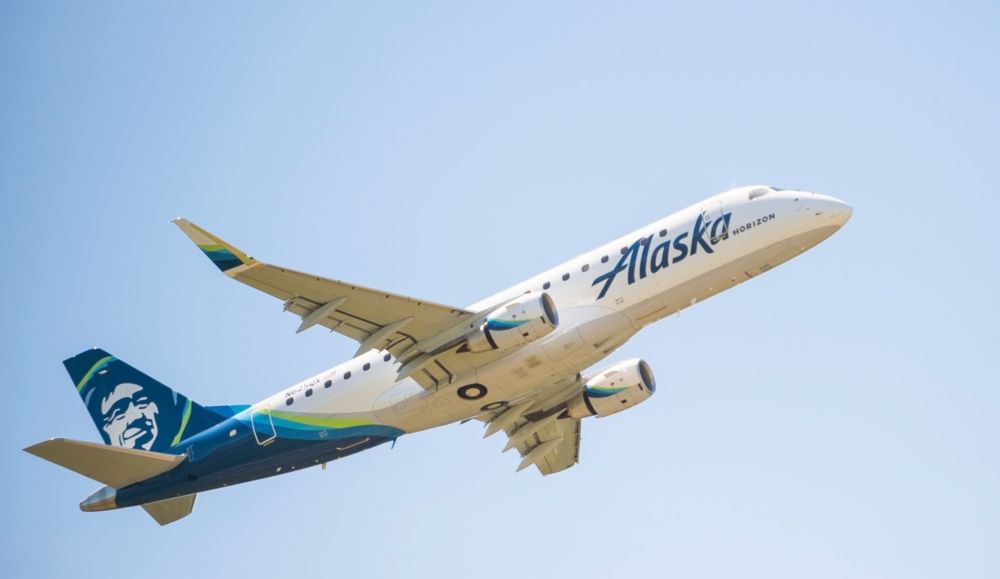Embraer's regional jet offering has faced another setback this week after the manufacturer's Board of Directors approved a three-year pause on its development, delaying entry into service until 2027.
The company has cited discussions over the US mainline scope clause as the primary reason for this delay, which is just another in a long list of obstacles for the E175-E2.
Initially set to enter service in 2020, the timeline has required frequent revisions, most recently in December 2021 when the development of the jet's Pratt & Whitney PW1700G engines was also suspended for three years.
This recent delay comes as little surprise to many and raises the question; why has the development of such a promising aircraft been so troubled?
Scope clause setbacks
The United States regional market is governed by a scope clause, limiting regional airliners to 76 seats and a strict maximum take-off weight (MTOW) of 39,000 kg.
The previous generation E175-E1 has fit well into this niche, serving as the backbone for many regional carriers.
The E2 model was expected to replicate this same success by offering improved economics and decreased emissions. However, this selling point has become the biggest issue for the jet. The larger engines that provide improved fuel efficiency also place the MTOW over scope clause limits.
While firm orders have yet to materialize, SkyWest currently holds an order for 100 E175-E2s that are unlikely to see service under current regulations.
Dispute over the scope clause has been ongoing since 2016 when Delta Airline's pilots' union voted to uphold the ban on the jet. Embraer has criticized this choice as a barrier to sales of the E175-E2 and environmental improvements within the US aviation industry. A review of the clause is expected in 2024.
Pandemic problems
The ongoing pandemic has also caused significant setbacks for Embraer and the E175-E2. Development was delayed back in 2020, citing the downturn in demand for air travel.
The same issue has plagued other regional competitors, notably Mitsubishi, who paused the development of their SpaceJet back in October 2020 due to numerous setbacks aligning with the start of the pandemic.
Embraer has revised the timeline for the program on several occasions, pushing back deliveries until 2024, though continuing to voice their confidence in the jet. An increase in orders for smaller jets was anticipated as part of post-pandemic recovery efforts, though this has failed to materialize. Demand for 50-seater regional aircraft has actually decreased, with airlines looking towards higher capacity A220s and E195-E2s for their regional offerings.
Dwindling interest
Doubts have been cast over Embraer's interest in continuing the E175-E2 program at all. The manufacturer recently announced the development of a clean-sheet turboprop aircraft, also set to enter the market in 2027.
Embraer's market outlook expects demand for 1,080 turboprop airliners worldwide, increasing popularity thanks to improved fuel efficiency and sustainability. The United States market was explicitly singled out, with anticipated demand for 500 to replace aging jets in the regional market.
The turboprop, which would comply with the current US scope clause, would compete with the E175-E2 and potentially cannibalize sales of the jet.
While the turboprop remains in early development, Embraer continues to hope that the E175-E2 will take to the skies if scope clause regulations are relaxed by 2024.
What do you think? Should Embraer continue the development of the E175-E2, or is it time to focus on marketing their new turboprop? Let us know in the comments.



